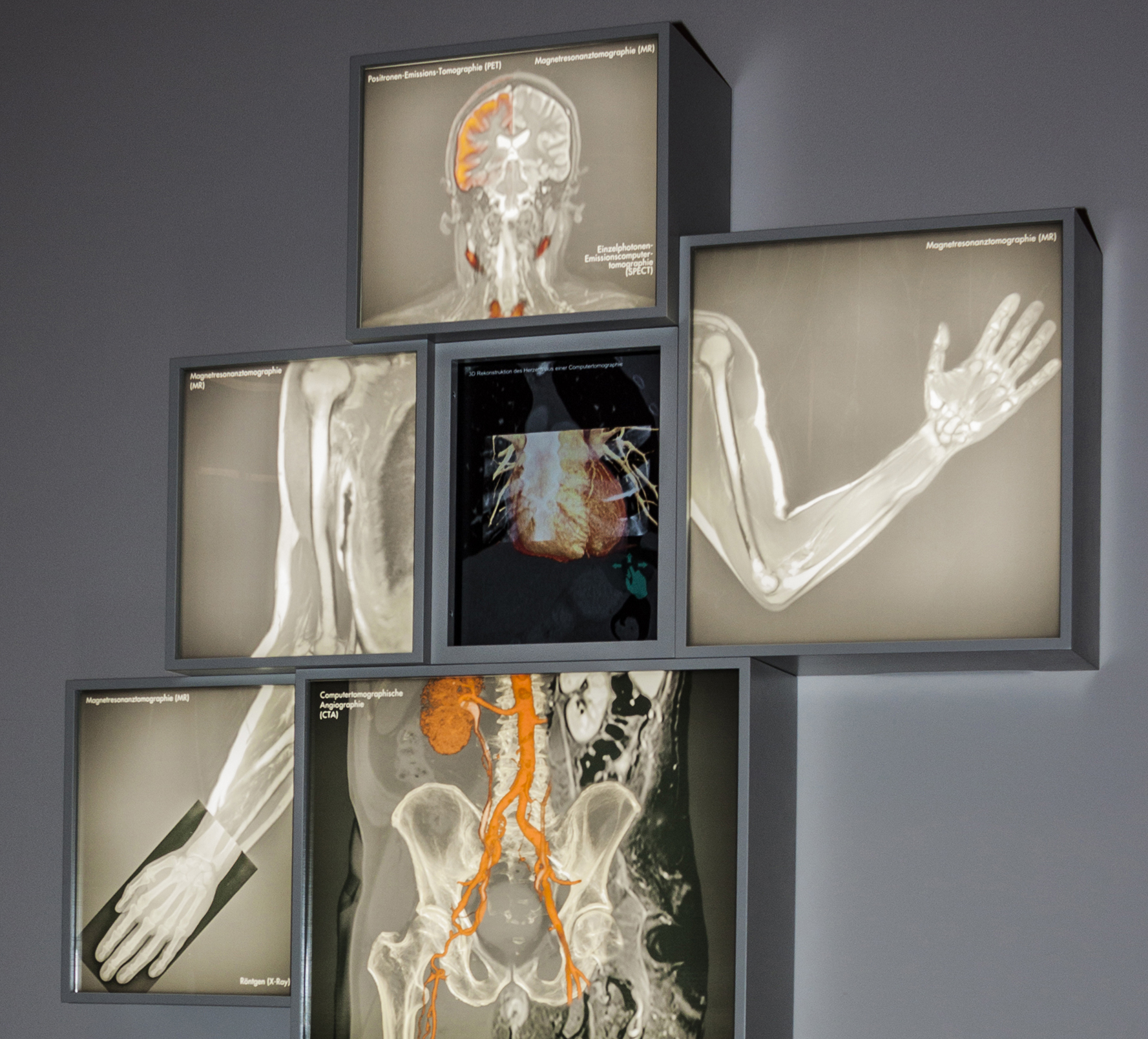Press Release
When screening patients, doctors no longer use just an X-ray unit. Today, an impressive variety of imaging methods is available to provide insights into the human body, each having its own strengths. This variety is what makes the “Image Man” a lively experience for the broad audience. Created for the Universum® Bremen, the exhibit is the product of collaboration between the Fraunhofer Institute for Medical Image Computing MEVIS, the Center for Modern Diagnostics ZEMODI and the Center for Nuclear Medicine and PET/CT. After several months of renovation, the Science Center once again opens its doors on March 7 to present its refreshed permanent exhibition with around 300 stations, most of them interactive.
“Image Man” is a life-size figure that comprises ten segments. The body parts depicted on the segments were produced with different imaging methods. The images of the spine and pelvis, for example, are from a CT-scanner and provide enhanced bone structure visibility. The image of the thigh was made with an MRI scanner. It enables the audience to recognize muscle fibers, connective tissue, and fat easily. The images of the brain and thyroid gland, visualized with special PET and SPECT methods, show metabolic activities. In the abdomen, a kidney filled with contrast agent can be seen in red.
At the center of the installation is a touch screen showing the beating heart. By touching the screen, visitors can interactively navigate through the results of different imaging methods; a 3D-CT image serves as a spatial illustration of the heart. A sequence of blood-flow MRI reveals the blood streaming through the vessels and swirling turbulently.
To make an accurate diagnosis, doctors often examine their patients with several different methods, each providing new, complementary information. This creates the problem of how to align the images perfectly to identify and compare the same tissue structure on two images reliably. For this purpose, Fraunhofer MEVIS scientists develop solutions for the clinical routine that combine image data from different methods or taken at different times.
The applications enable position correlation, for example. If, during a breast exam, the doctor selects a particular tissue area on a mammography, a small circle will automatically show the same structure on the MR image beside it. Treatment plans based on CT images developed at the beginning of radiation therapy can also be optimized. The plan is adjusted to the patient and the changes of his or her body and provides more beneficial treatment.
Material
Related Topics
 Fraunhofer Institute for Digital Medicine MEVIS
Fraunhofer Institute for Digital Medicine MEVIS